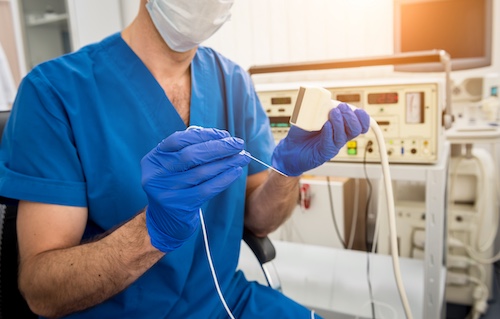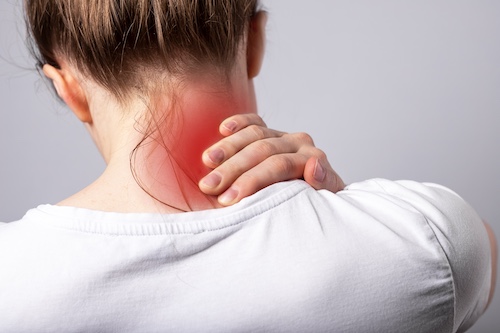Post-Herniation Rehab: Your Path to Recovery
At VeriSpine Joint Centers, we are dedicated to providing exceptional, patient-focused care for individuals suffering from chronic pain, personal injuries, auto accidents, and work-related conditions. Located in the heart of metro Atlanta, our multidisciplinary team of medical professionals specializes in advanced, non-surgical treatments designed to relieve pain, restore mobility, and improve overall quality of life.
A herniated disc can disrupt your daily life, causing pain, weakness, and limited mobility. However, with the right approach to post-herniation rehab, you can recover effectively and regain function. At VeriSpine Joint Centers in Metro Atlanta, we offer comprehensive rehabilitation services designed to relieve pain, strengthen muscles, and prevent future injury.
In this blog, we will explore the essential steps in post-herniation rehab and how VeriSpine Joint Centers’ expert rehabilitation services can help you manage pain, restore mobility, and prevent future injury.
The Role of Physical Therapy in Post-Herniation Rehab
Physical therapy plays a key role in post-herniation rehab. It focuses on pain relief, improving mobility, and strengthening muscles to prevent future injuries.
Pain Relief and Pressure Reduction
One of the main goals of physical therapy after a herniated disc is to reduce pain. Techniques like manual therapy help relax muscles, ease muscle spasms, and relieve pressure on the spinal disc and nerves. A physical therapist works with the patient to identify and treat the source of pain, providing relief while improving the range of motion in the affected area.
Strengthening the Core and Spine
Core strengthening is essential for post-herniation rehab. A strong core supports the lumbar spine and helps prevent further injury. Physical therapy focuses on exercises that target the abdominal and gluteal muscles, improving stability and posture. Strengthening these muscles can reduce strain on the spine and spinal nerves, promoting better alignment and reducing pain over time.
Restoring Function and Mobility
Physical therapy also works to restore the patient’s ability to perform daily activities. This includes improving flexibility, balance, and overall mobility. Specific exercises help the patient return to normal movement patterns, such as standing, walking, or bending. A physical therapist may recommend gentle movements, like the bird dog, to enhance spinal health and minimize the risk of re-injury.
Preventing Future Herniations
Another goal of post-herniation rehab is to prevent future problems. Physical therapy focuses on correcting posture, which can help reduce strain on the spine. Strengthening muscles in the lower back and abdomen also reduces the chance of further disc degeneration or injury. Regular exercises and follow-up care ensure that the patient maintains a healthy spine long after the rehab process.
Symptoms of Herniated Disc and How Post-Herniation Rehab Can Help
A herniated disc causes a range of symptoms that vary in severity. Post-herniation rehab can help manage these symptoms, reduce pain, and improve overall function.
Back Pain
Back pain is the most common symptom of a herniated disc. The pain often results from pressure on the spinal nerves, causing discomfort in the lower back. Physical therapy aims to reduce this pressure, using techniques like manual therapy and specific exercises to alleviate pain. Strengthening the core and lumbar spine can also help prevent further back pain in the future.
Leg Symptoms
A herniated disc in the lumbar spine can lead to symptoms in the legs, such as numbness, tingling, or weakness. These symptoms occur when the herniated disc presses on the spinal nerves, affecting nerve function. Physical therapy helps by targeting the muscles in the lower body to reduce nerve compression, improve mobility, and restore strength to the legs.
Muscle Spasms and Tension
Muscle spasms often accompany a herniated disc, making it difficult to move freely. These spasms are a response to the pain and pressure caused by the disc. Physical therapy techniques, including massage therapy and stretching exercises, help relax the muscles, ease tension, and reduce spasms. These treatments are essential for improving comfort and mobility.
Neck Pain
In some cases, a herniated disc can occur in the cervical spine, leading to neck pain. This pain can radiate down the arms, causing discomfort and limiting movement. Physical therapy for cervical herniated discs focuses on neck stretches, strengthening exercises, and posture correction to relieve pain and improve range of motion.
Preventing Further Injury
Post-herniation rehab not only addresses current symptoms but also aims to prevent future problems. By improving posture, strengthening muscles, and promoting proper movement, physical therapy reduces the risk of further disc degeneration or additional herniations. Regular rehab sessions help maintain spinal health and improve long-term outcomes.
Step-by-Step Rehab Process: From Acute Phase to Recovery
The rehab process for a herniated disc involves multiple stages, from managing the acute phase to achieving long-term recovery. Each phase focuses on different goals to help relieve pain and restore function.
Acute Phase: Managing Pain and Inflammation
The acute phase of post-herniation rehab focuses on managing pain and reducing inflammation. During this stage, patients may experience severe back pain, leg symptoms, or muscle spasms. Physical therapy typically involves rest, gentle stretches, and positioning techniques to alleviate pressure on the spinal disc and nerves. Techniques such as lying on your stomach or keeping the knees bent can help reduce pain while the body heals.
Subacute Phase: Restoring Movement and Strength
As the acute pain decreases, the focus shifts to restoring movement and strength. During this phase, physical therapy incorporates more active exercises to improve flexibility, mobility, and strength. Core strengthening exercises, such as pelvic floor training and bird dog, are introduced to support the lumbar spine. These exercises help improve stability and prevent further injury by reinforcing the muscles around the affected disc.
Recovery Phase: Full Function and Preventing Future Injury
In the recovery phase, the goal is to restore full function and prevent future injury. At this stage, physical therapy focuses on correcting posture and improving endurance. Patients are encouraged to perform strengthening exercises regularly to support the spine and maintain a neutral spine position during daily activities. Postural correction exercises help reduce the risk of degenerative disc disease and future herniations.
Ongoing Maintenance: Long-Term Spinal Health
Even after recovery, ongoing maintenance is crucial to keep the spine healthy. Continued physical therapy, focusing on core strengthening, flexibility, and posture, can help patients avoid further disc herniations or other spine issues. Regular exercise and periodic check-ups with a physical therapist ensure the lumbar and cervical spine remain strong and resilient over time.
How VeriSpine Joint Centers Can Help You Heal
VeriSpine Joint Centers offers specialized care to help patients recover from herniated disc injuries. With a focus on comprehensive rehabilitation, our services aim to relieve pain, strengthen muscles, and improve overall function.
Personalized Treatment Plans
At VeriSpine Joint Centers, we understand that each patient’s needs are unique. Our team of experienced physical therapists creates personalized rehab plans tailored to address your specific symptoms and goals. Whether you have a lumbar disc herniation or cervical spine issue, we provide treatment strategies designed to relieve disc herniation pain and restore mobility.
Advanced Techniques for Pain Relief
We use advanced techniques like manual therapy, massage therapy, and orthopedic physical therapy to target the source of your pain. These therapies are effective in reducing muscle spasms, easing tension, and relieving pressure on the spinal nerves. Our goal is to alleviate discomfort and improve your quality of life as quickly as possible.
Focus on Core and Spinal Health
Core strengthening is essential for long-term recovery after a herniated disc. At VeriSpine Joint Centers, we emphasize exercises that strengthen the abdominal, gluteal, and back muscles. By building a stable core, we help support the lumbar spine and prevent further injury. Our physical therapists teach patients the proper techniques to maintain a neutral spine and avoid movement patterns that could lead to a further injury.
Ongoing Support and Monitoring
Recovery doesn’t end with a few sessions of rehab. At VeriSpine Joint Centers, we provide ongoing support and monitoring to ensure long-term recovery. Our team will regularly assess your progress, adjust your treatment plan, and help you maintain the health of your intervertebral discs. We focus on improving not only your immediate symptoms but also your spinal health over time to prevent future issues.
Convenient Care in Metro Atlanta
Located in Metro Atlanta, VeriSpine Joint Centers provides accessible care for those dealing with herniated discs and other spinal conditions. Our team is committed to providing effective treatment that fits your lifestyle, helping you get back to your daily activities with confidence and minimal discomfort.
Start Your Recovery Journey Today!
A herniated disc doesn’t have to define your life. At VeriSpine Joint Centers, our dedicated team of specialists is committed to helping you recover fully through tailored post-herniation rehab. We combine expert physical therapy, manual therapy, and core strengthening exercises to alleviate pain, restore mobility, and prevent future injuries.
Contact us at 678-782-7999 for a free case review today!







